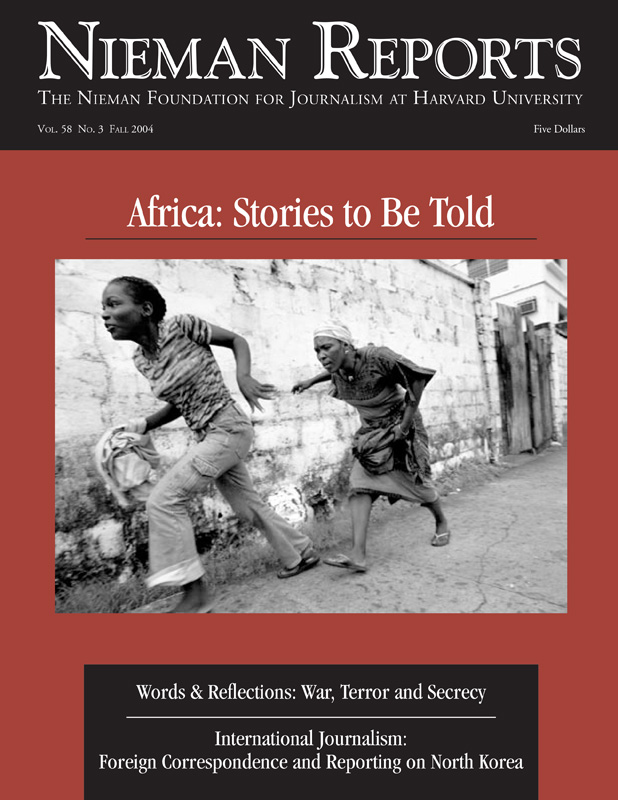Soon after President Bush declared North Korea to be one of three members of the “axis of evil” in 2003, I was twice sent there as a photojournalist, once for Time and once for The Boston Globe. Getting in was only half the battle. Producing images to shed light on how people live in this most secluded of nations was much harder. The North Koreans are zealous in making sure that foreign journalists see only what they are meant to see and nothing more.
Arriving at the airport, I was subjected to a thorough search and forced to yield my cell phone and other communications equipment I had. The minders who met me there and remained with me every step of the way were polite, but they made their rules very clear: “If you want to take a photo you must ask us for permission,” they said. “You are not allowed to photograph people. You are not allowed to go anywhere without a guide. If you do, it is a serious matter and will result in your early departure from the DPRK [Democratic People’s Republic of Korea].” Having been in North Korea a few years earlier, I knew I’d have to find the delicate balance of getting photographs the news organizations wanted to publish and not getting expelled prematurely.
Being in North Korea is to experience an overwhelming feeling of emptiness. The cities seem absent of inhabitants. There is little traffic and few crowds. The winter is bitterly cold, and people tend to stay indoors. There is no advertising, little color to catch the eye, and almost no shops or signs of commerce. People keep away from foreigners, especially ones with cameras and, if approached, they quickly scurry away.
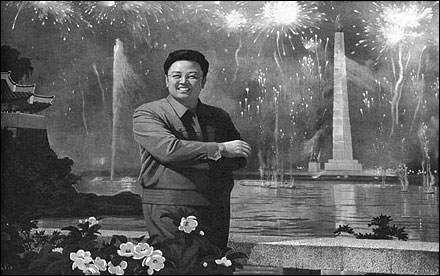
The "Dear Leader," Kim Jong Il, celebrated on a billboard in downtown Pyongyang, North Korea. Photo by Dermot Tatlow.
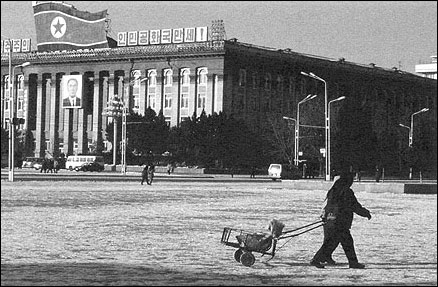
The main square in Pyongyang, North Korea, with the national flag and a portrait of Kim Il Sung prominently positioned. Photo by Dermot Tatlow.
On one of my trips, we drove from the capital, Pyongyang, down a deserted highway to Kaesong, a city just north of the border with South Korea. Fuel is in short supply. During the day, people walk along highways devoid of cars. Despite living in high-rise buildings, women carry buckets to an outside spring to collect water. Either the water pumps were out of order or their pipes had frozen. On this particular night, in subzero temperatures, we drove along pitch-black streets. No light came from the street lamps, and in only a handful of the apartments in the many buildings we drove past could we see a faint glow of light from windows. There seemed to be virtually no electricity. The tourist hotel where we stayed had its own generator, but with little fuel available it stopped running at 10 o’clock that night. Lights out, and goodnight.
In a country that has acute food shortages, tourists eat extremely well. It was a constant struggle to survive the endless alcohol-laden toasts and then draw to a close these multicourse banquets that are held for foreign guests. But that was my goal, since I needed to find ways to get our hosts out of the restaurant so I could quietly snap a few more photos. On just a few occasions, I succeeded.
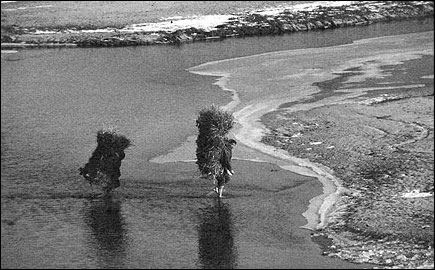
Barefoot peasants carry animal feed across a partially frozen river outside of Kaesong, North Korea. They did not put on shoes as they continued to walk back to their farms. Photo by Dermot Tatlow.
At one point in our journey, we stopped by the side of the highway south of Kaesong to let a North Korean official explain the location of a planned industrial development zone they hoped South Korean investors would build. As the North Korean official waxed lyrical about the development potential of his country, a man and a youth walked by carrying enormous bundles of dried grass on their backs. Presumably the grasses were either for fuel or animal feed. As they came to a partially frozen river, the two of them waded across it, without breaking their stride. I realized they were barefoot and expected them to put their shoes back on when they reached the other side. They did not. They just kept on walking barefoot along the frozen ground off into the distance.
Dermot Tatlow is a freelance photojournalist whose work has appeared in Time, The Boston Globe, and Der Spiegel.
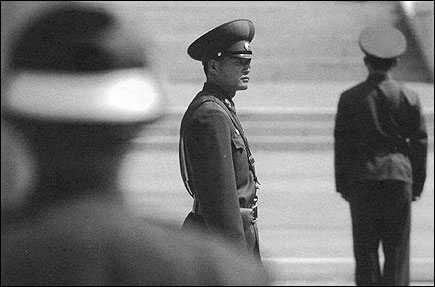
At the tense border between North and South Korea, a North Korean guard eyes his South Korean counterpart.
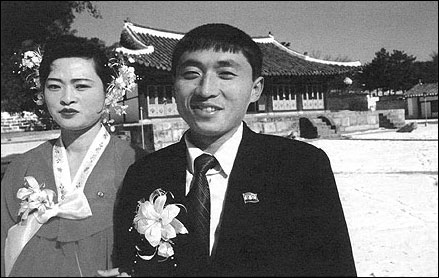
On their wedding day, a couple goes to the historic Song Kyun Guan Confucian Academy in Kaesong, North Korea, to be photographed. She wears traditional dress, he wears a Western suit. Both wear the ubiquitous pin badges of Kim Jong Il and Kim Il Sung near their hearts.
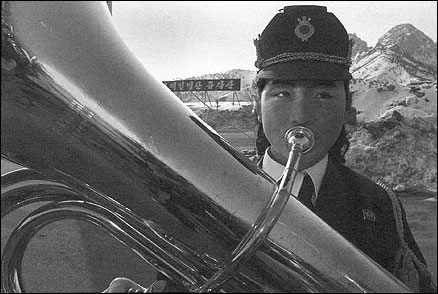
To celebrate the birthday of Kim Jong Il, a brass band was driven to Onjung-Ri to perform for South Korean tourists and journalists at the Hyundai tourist resort. Kim’s birthday on February 16th is a national holiday.
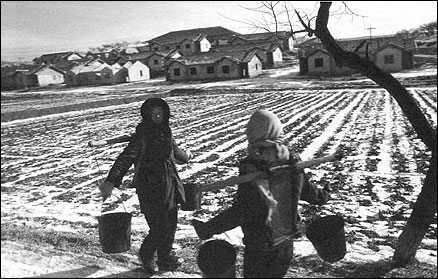
In winter in Pyongyang, North Korea, with little electricity and no running water, women are forced to carry water home.
Photos by Dermot Tatlow.


